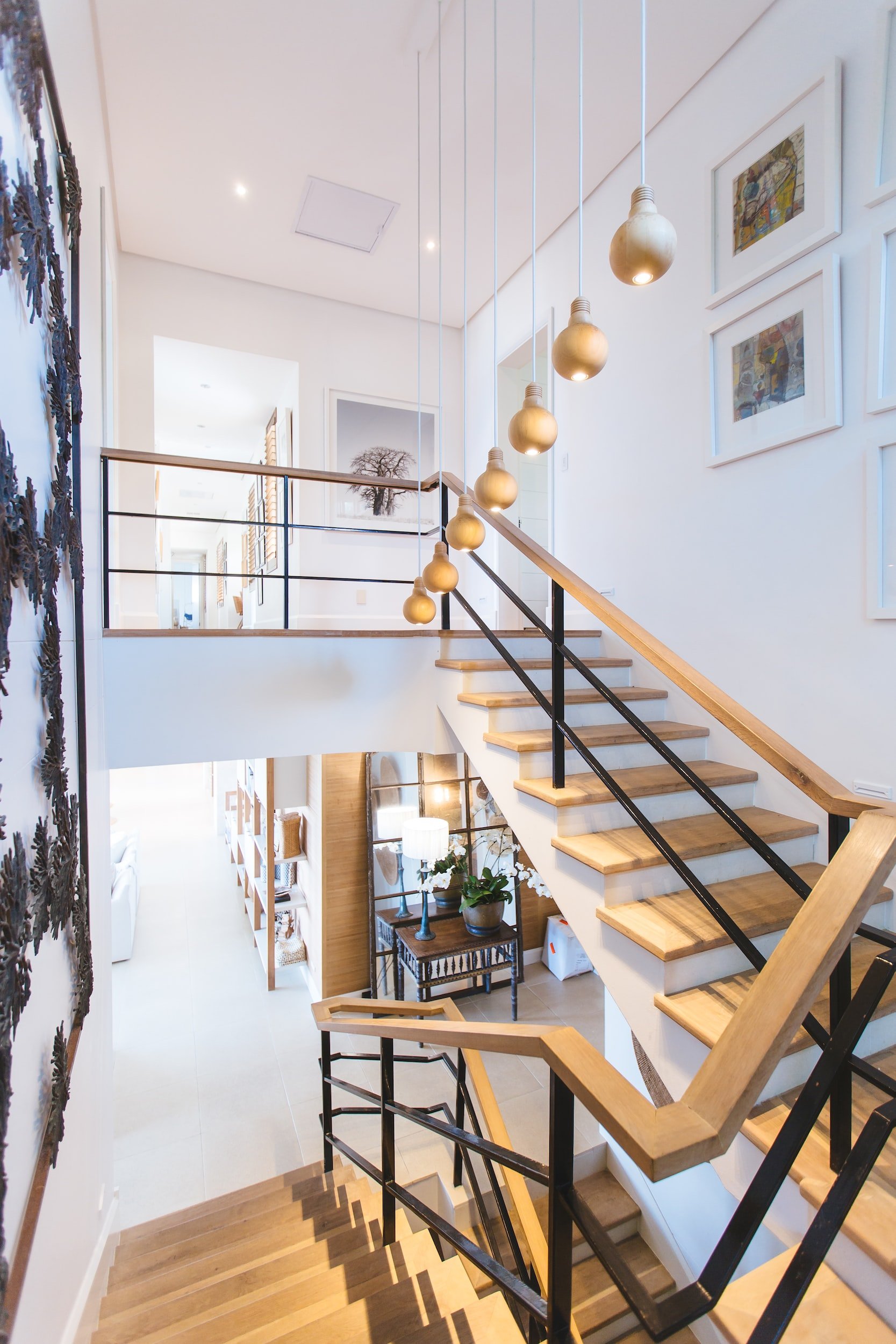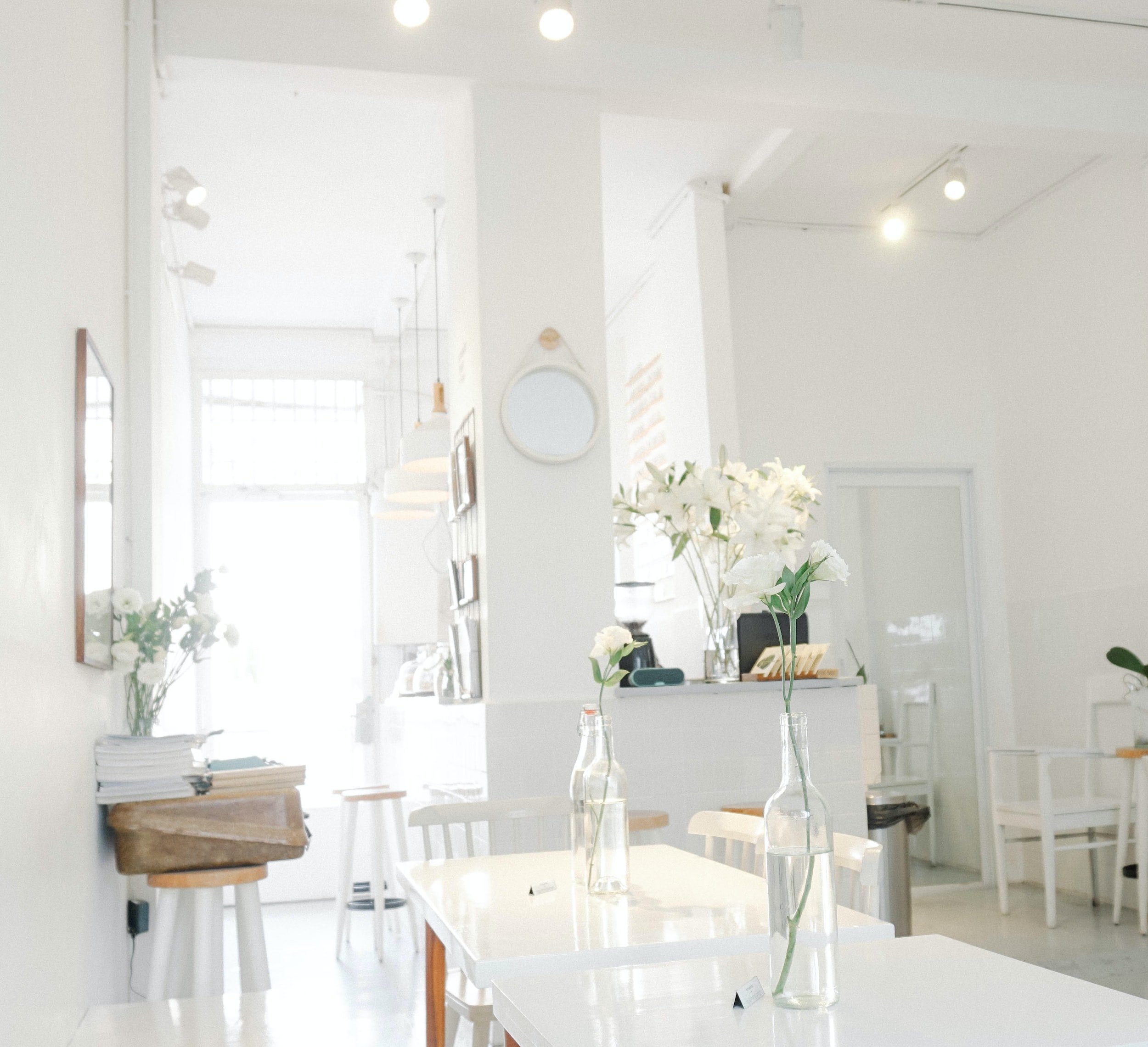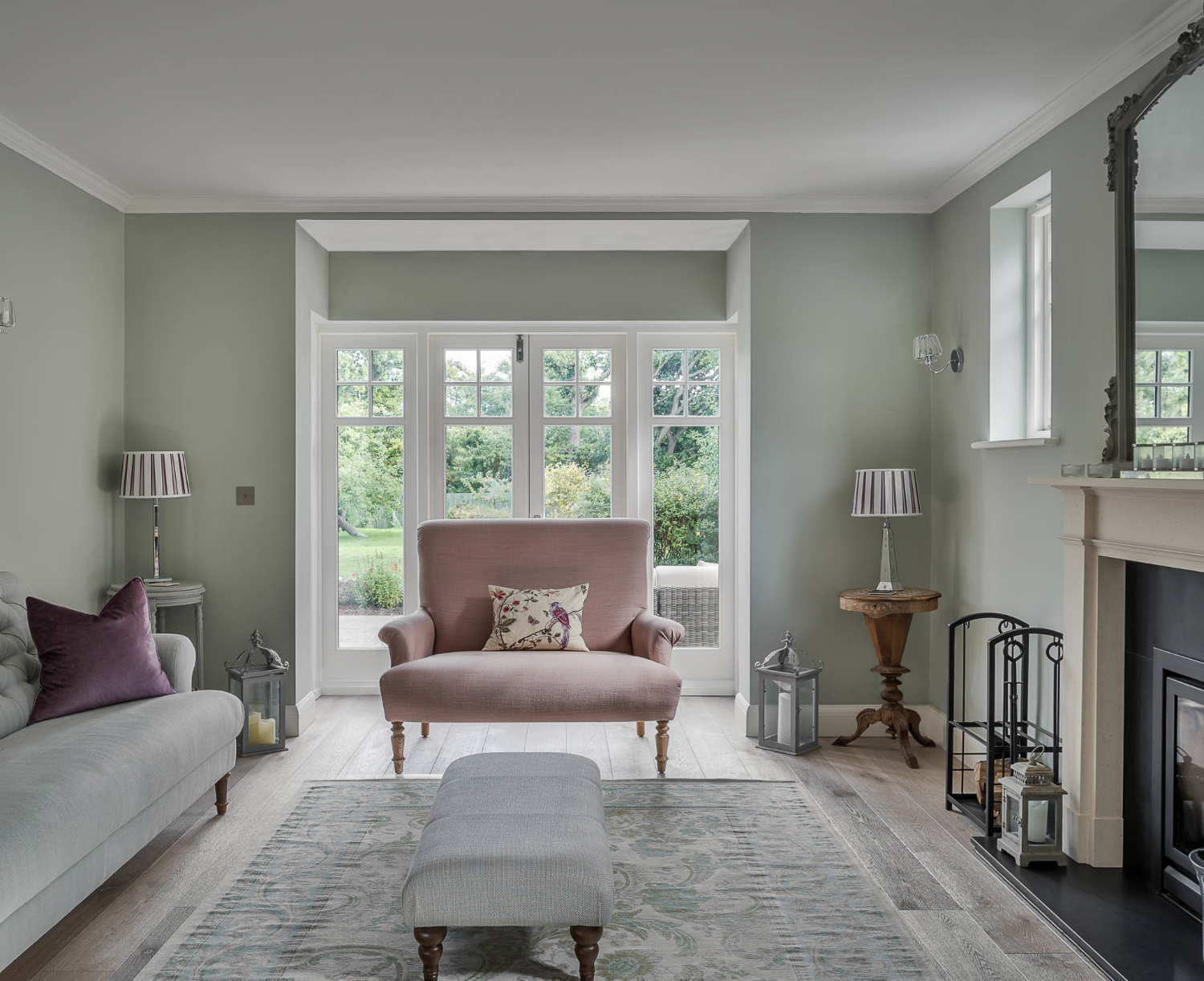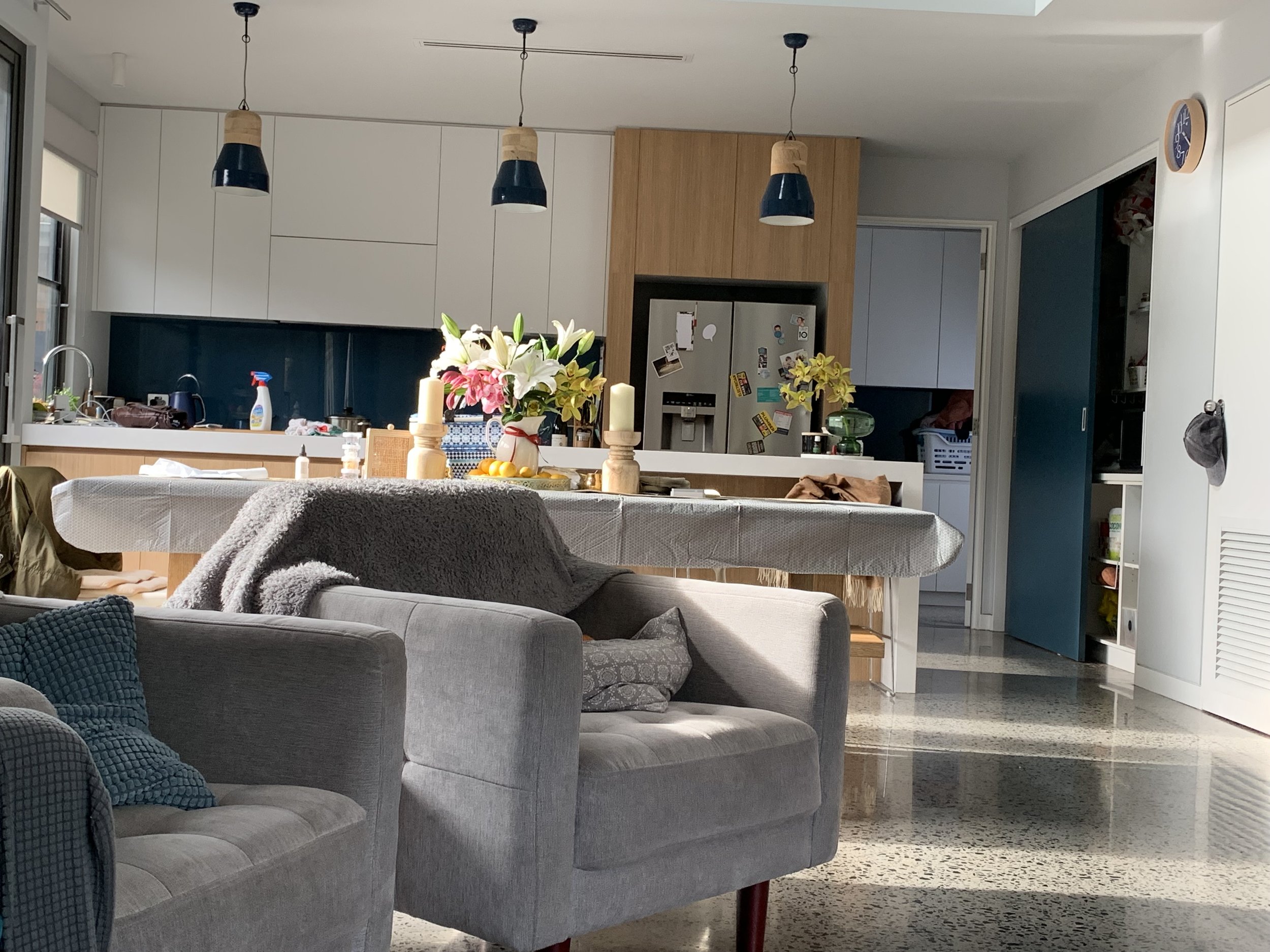Creating pet-friendly spaces within a home or any building is an essential aspect of design that often goes overlooked. As an architect, incorporating elements that cater to the needs of pets can significantly enhance the functionality and comfort of your designs, making them more appealing and livable for pet owners. Here's how you can consider pets in your architectural designs:
Read MoreReimagining Your Space in 2024: To Rebuild or Renovate?
In the evolving landscape of residential architecture, the decision between rebuilding a new house and renovating an existing one has never been more complex. As we venture deeper into 2024, a year marked by innovative construction methods, a growing emphasis on sustainability, and changing lifestyle needs, homeowners are faced with a pivotal choice. This decision is not merely financial; it encompasses lifestyle, environmental impact, and the potential to shape one's space for decades to come.
Read MoreExploring Roof Types and Styles: Considerations in Architectural Design
As an architect, the roof is not merely a functional element but a crucial aspect of the overall design aesthetic and structural integrity of a building. The choice of roof type and style significantly impacts the building's appearance, functionality, and even its environmental performance. In this article, we'll delve into various roof types and styles, along with key considerations in their design.
Read MoreRenovating trends in Australia in 2024
Trends in 2024, it's fascinating to observe how modern advancements and changing lifestyles are shaping the future of home renovations. Here are some key trends and practical examples:
Read MoreUsing pot planters as light shade options
I love to explore the innovative idea of using pot planters as light shade options in house design. This concept blends functionality with aesthetic appeal, creating a unique and eco-friendly approach to interior design.
Read MoreSource: Pinterest
Courtyards as a considered part of your house design
Courtyards are a fundamental element in architectural design, offering a range of advantages that greatly enhance the functionality and aesthetics of a home. Here are some key benefits:
Read MoreWhy to consider a window bench seat in designing your home
Incorporating a window bench seat into the design of your home can offer several aesthetic and functional benefits. Here are some reasons why you might consider adding a window bench seat to your home design:
Read MoreHow you make your bathroom look bigger? - Try these ideas.
As an architect, I understand that creating the illusion of space in a small bathroom is crucial to make it look and feel bigger. Here are some design tips and strategies to achieve this:
Read MoreTrends for hacks in residential interiors
It's always a good idea to stay updated with the latest design trends and ideas. Here are a few popular trends and hacks for residential interiors:
Read MoreWhat to consider when designing outdoor spaces
When designing outdoor spaces, there are several important factors to consider. Here are some key aspects to keep in mind:
Read MoreShelving as a design opportunity
Shelving can be an excellent feature in any home, not only for its practicality but also for its aesthetic appeal. Here are some tips on how to use shelving as a feature in your home:
Create a focal point: Use shelving to create a focal point in your living room, bedroom or any other room in your home. You can achieve this by arranging your items to draw the eye towards the shelves. Consider using items of different heights and sizes, such as books, photo frames, and decorative objects, to create a visually appealing display.
Use shelving to divide spaces: Shelving can be a great way to divide up a large room or open-plan living space. You can use shelving units to create zones for different activities while maintaining an open feel. For example, you can use a large bookshelf to divide your living room from your dining area.
Use shelving to add storage: Shelving is an excellent way to add storage to any room in your home, from the kitchen to the bedroom. You can use shelving to store items you want to keep on display, such as your favourite books or decorative objects, or to store items you want to keep hidden away, such as clothing or kitchen appliances.
Use shelving to add colour: Shelving can be a great way to add a pop of colour to your home. You can paint your shelves brightly or use colourful storage boxes and baskets to add interest to your shelving display.
Use shelving to display collections: If you have a collection of items, such as vintage cameras or figurines, consider using shelving to display them. This showcases your collection and adds visual interest to your home.
Use shelving to add texture: Shelving can be a great way to add texture to your home decor. Consider using natural materials, such as wood or rattan, for your shelving units to add warmth and texture to your space.
In summary, shelving can be a versatile and practical in any home. Whether you use it to create a focal point, add storage, or display your collections, there are endless possibilities for incorporating shelving into your home decor.
My Award Entry Into The Victorian Architecture Awards
Here is the presentation I gave last month for the Victorian Architecture awards
A 7 minute presentation of a home I designed for the Victorian Architecture Awards.
A renovation to an existing clinker brick house with a contemporary two storey extension. The owners engaged a builder but also sought to undertake much of the construction works themselves in order to keep costs a low as possible. The architect was not engaged to administer the build.
Simplicity of the design and its construction technology and identifying simple strong gestures that would make the design unique were of paramount importance. The entirety of the existing dwelling was retained. It was stripped back to its structure, underpinned, rewired, re-plumbed, and had all its internal surfaces and windows replaced. The new extension attaches cleanly onto the back of the house allowing the couple to reside in the front part of the dwelling whilst the back was being constructed.
The form and shape of the extension and the construction technology of the design was kept as simple as possible so that as few trades as possible were needed to complete the base building. The concrete slab was polished for its beauty, resilience and cost effectiveness. The steel and timber frame is clad in color bond siding with some rendered cement sheet. The zinc alum flat roof provides a platform for solar panels and is easily accessed via a roof hatch with a built in ladder. The staircase was designed to be fabricated by the projects steel fabricator. Its detailing and utilitarian simplicity create a striking center to the house. Its open structure filters light and permits views from one end of the house to the other.
Long slot windows on the eastern and western facades, skylights over the staircase, bathroom light shafts, and hallway slot windows filter natural light into the all areas of the house in different ways and provide outlooks and vistas that extend the interior spaces outside. The ground floor extension is open connecting the inside of the house with its back yard.
A large open kitchen with a butler’s pantry connects the built in dining area with the family room. The joinery was kept simple and designed so that prefabricated systems could be used and installed by the owners. In addition to repurposing as much of the existing dwelling as possible, solar panels on the roof, electric hydronic heating, double glazing and upgrading of all insulation further enhance the energy efficiency of the home.
The first floor was designed with a dramatic curved cantilevered wall at the back of the house. The shape of the façade generated from an analysis of overlooking. By angling the windows inward into a V shape and blending the apex with a curve overlooking into the neighbors yards is prevented. This further allows for full height glass windows to look down onto the backyard and into the tree tops without screening. Standing in front of this window one gets the sense of floating.
Throughout the day this sculptural glass façade reflects its surrounding trees. At night from within the curved glass reflects its interior back into itself creating distortions akin to abstract compositions.
The Australian Institute of Architects Presentation to Juries offered entrants in the 2023 Victorian Architecture Awards an opportunity to address judges with their nominated projects. Featuring some of Australia’s most prominent architects, Presentation to Juries is a rare opportunity for the public to learn about the influences behind some of Victoria’s most innovative buildings and follow the architectural process from concept to construction.https://www.architecture.com.au/archives/awards/neville-street-mark-macinnis-architect
See the other entrants here
The importance of light in a design
We all know it when we feel it but it is sometimes hard to put our finger on it. Light. That warm glow in a kitchen, the drama of a hallway pendant or the soft ambient light from a lamp in a study. Getting lighting right is a real art and something that is not a consideration of the design of your home until the very last minute.
When designing a restaurant creating a vibe or feeling adds to the overall experience of that space and so why should our homes be any different? The answer is they shouldn’t be but lighting is often forgotten till the end of a project.
A good way to think about light and lighting design is how you want to feel in the space. How will you be using it. I think it is always preferable to use natural light where you can and understand the orientation of your design to capture this. Simple elements like window orientation, skylights and doors with glass panels can make such a difference to the light in your home.
There are also spaces in your home where you might want low or moody light. For example the bedroom or study. Choice of drapes, paint choice and lighting all come into play to create that moody atmosphere.
Lighting has changed significantly in the past few years with more options for both inside and outside the home. From strip lighting, solar and more. You only have to go into a lighting shop to see the range of options and it is easy to become overwhelmed. So think about the space and feeling you want to create in each room and the overall space and start from that place. It will help you make better lighting decisions.
Read also: Picking the right light.
Colours for 2023 according to Architectural Digest
There are nine colours or hues, according to Architectural Digest that is trending for 2023.
Terra Rosa - earthy tones, pairing rich terra-cotta with a dusty rose. Part of the brand’s Life in Poetry palette, the colour more than holds its own as a dominant ground, while its muted shade makes it a tasteful, timeless accent to almost any colour palette.
Vining Ivy - subtle transition away from the neutral-ish greens that defined 2022, Vining Ivy successfully straddles the line between green and blue by incorporating jewel-like elements.
3. Blank Canvas - neutral, monochrome calm as seen in trending organic modern interiors. Despite the implications of its name, Blank Canvas is more than capable of standing on its own by offering a playful, warmer take on traditional white.
4. Redend Point -sits at the centre of the neutral spectrum and the emerging trend towards energising earth tones that play well with other neutrals.
5.Raspberry Blush -Warm and vivid, it’s designed to create an instant impression in both big or small doses, adding a touch of excitement and happiness to any space.
By Annie Hall Interiors - Boston
6. Alizarin -Deep but effervescent red shades are popular in brands’ Color of the Year 2023 selections. A rich, stirring auburn hue
7. Amber - draws on the influence of its namesake gemstone to replace the negative energy of the pandemic years with soothing positivity. The honeycomb in colour.
By Design Lines
8. Viva Magenta -A berry red that blurs the lines between warm and cool, Viva Magenta is the bold color that is turning heads on the runway and turning up in the metaverse.
Atherton Residence
9. Breezeway - A silvery green suitable for everything from beachside vibes to modern, contemporary settings, perfectly viable neutral for those ready to brighten a space by bringing the outdoors in.
Traditional living room
Trending in 2023 : Wellness in house design
There is a growing awareness of the importance of health in our built environment. How our homes are designed and constructed can significantly impact our health and well-being.
Read MoreWhen should I renovate my home with these crazy construction prices?
Over the last year, the cost of doing a renovation has increased dramatically. Anyone trying to build a home recently has run against cost blowouts as a monstrous problem. Price pressures on materials and the backlog of construction caused by COVID contributed to this price increase on projects. So when is the best time to do your renovation? Let’s look at the forecasts.
Read MoreThe modular home - built within eight minutes!
It is called the Ubox, and it can be expanded in eight minutes. Ten Fold Engineering, a UK-based company, has built an expandable-house prototype. The unit can be trucked to any location and set up in minutes.
When compressed, the building can be transported by truck. After you set it up in your preferred location, the building expands like an accordion, using a counterbalance system to grow roughly three times its original size. Ten Fold Engineering says its self-deploying building can also be used for medical clinics, stores, or office space. And it’s yours to unfold for about 130,000 pounds or around $500k AUS.
Here are some we found to find a similar modular builder in Australia.
Anchor Homes - they have a great pdf - All you need to know about building a modular home.
Affordable Sustainable Housing Design that makes sense in 2022.
With the interest rates just rising and the cost of building at an all-time high, building cost-effectively and in a timely manner is more on the radar than ever before. Here are some key affordable sustainable designs that will assist you in planning and building your renovation or new home.
It is well known that the construction and environmental control of buildings contribute 40-50% of all greenhouse gas emissions. We all can assist in building efficiently with the following steps.
Orientation of design - building to keep as much heat in during the cooler months and sun out in the hotter months can not only cut down on your heating and cooling costs but also ensure that your extension is more efficient with energy. e.g onto a sunny north-facing backyard. Our home is designed to be passively warmer in winter and cooler in summer. A key consideration was also the cost of the home to run not just build.
Before the days of electricity and gas, houses were warmed, cooled and lit by the sun, air and wind. Orientation of a house can take advantage of the sun for natural light and warmth (unless you’re in a tropical climate, where your focus will be on shading). Eaves and awnings can provide sun control; openings such as windows and doors can allow for natural ventilation and cooling; and materials with thermal mass, such as stone and rammed earth, can store heat within. These passive solar design principles improve the performance, energy efficiency and sustainability of a home.
Our living area. It is west facing but captures the light and heats up the floor in winter. We also have double glazing. While concrete is often not the most environmentally friendly product to make, being very carbon-intensive, it does have a number of benefits. Concrete is a great example of thermal mass, helping to store thermal energy, and it’s very hard-wearing, so it requires very little maintenance and has a very long lifespan.
2. The verandah - a verandah is a great way of shading an area, and protecting it from the elements. We use it in part to escape the heat but also to provide a sheltered sitting area.
3. Use local materials where you can. With the short supply of materials in the building industry at the moment, those who have chosen locally sourced materials will be in front. Using local resources is typically a more sustainable option as they are native to the region, sometimes renewable, and reduce the energy that is required to transport goods long distances. If you’re designing or renovating a house, consider what materials are native to your region to create a house that is not only more sustainable, but also more in harmony with the local landscape. Sandstone has been a building block of Australian architecture for more than two centuries, its strength and durability outlasting many other construction materials. Rammed earth is easily accessible and is naturally cool living environments provide a reprieve from the extreme temperatures of the hotter regions.
Rammed earth project under construction
4. Plant a tree or two. Planting trees and gardens not only enriches your environment but can add to shade, atmosphere ad even your table with fresh herbs and veggies. Sometimes you need to remove trees or gardens to create a design but plantings are very important and give so much back to the habitat. We have a circle of trust that we often have our breakfast in and give us a lovely outlook from our living area. We also have a water bladder under our deck to capture rain run off and grey water from our washing machine to water our veggie patch.
The circle of trust garden area.
5. Lamps and skylights instead of main lights. We use lamps where we can instead of moonlights. Not only does it set a better mood but it also is far more energy-efficient. Even on a cloudy day our sky lights in the hall and.
Hallway skylights. Also has automatic blinds which we can close to shut out the hot sun.
6. Find local trades. Working with trades in your local area will assist you with so many elements of your build. We also try and find local suppliers and trades for each job we do to keep the money in the community and because they generally understand what works with the council and how to build efficiently.
Room with a view - how to frame your views
How do you frame the best outlook for your home?
Read MoreHampton a family renovation
I thought I would profile the Hampton lookbook on this blog. This home was done several years ago now and just sold for well over $3.4 million dollars.
Working with the own owners on this project was really rewarding. This was a family home in Hampton that needed a big face lift and extension. The clients were very open to my ideas and together we created a beautiful family home that they have enjoyed for many years.
Modern Kitchen. It had it’s own seperate butters pantry.
Here is the recent advertisement for the home in Real Estate.com.au
Design for Hampton Home





![It is nice to be quoted: “A skylight is a horizontal window that provides natural light into rooms and corridors that [usually] cannot have windows,” says MacInnis. “Skylights can also provide outlooks to the sky, which in itself ca](https://images.squarespace-cdn.com/content/v1/5bfb5bdfcc8fed3bb9285ae7/1651200504539-2BYM0FJWR78PZFE4IHYS/image-asset.jpeg)

































